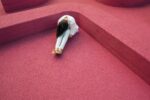International Week of Happiness at Work (Monday 23 – Friday 27 September) is here, and as a nation we are edging closer and closer to becoming a “burnt-out” nation. As business leaders we have a responsibility to do everything in our remit to make sure our employees’ wellbeing is not only considered, but at the forefront of how we conduct business. We spend a lot of our time in our workplaces, so it is imperative that the spaces we are in don’t negatively impact our wellbeing. What people are really looking for from work and the office is connection—to each other and to a broader sense of purpose. The workplace can help you fulfil both these needs. An office that’s a people-magnet, with settings and design elements that bring people together and remind them that their work has meaning.
While it’s easy to think that interior design doesn’t directly impact employee wellbeing, when you consider things like light, colour, space and furnishings and comfort, how a room looks, feels and functions really can affect your employees.
If your workplace is void of natural light and materials.
That shouldn’t mean that your hopes of creating a bright, joy-inducing space have gone. Creatively utilising the correct light fixtures can do a great job of solving these problems when executed well. We are fortunate to have the research at our fingertips about which types of lighting affects us in different ways, such as too much blue light from computer monitors, phone screens and tablets which can cause our eyes to strain and induce headaches. Poorly diffused light can create dimly lit areas leading us to struggle to work and overly bright white light can be overstimulating.
High ceilings offer opportunity to introduce low hanging, interestingly designed light fixtures that can act as statement pieces within themselves. Pair this with bright, warm bulbs and you can create spaces flooded with light without windows or skylights. As well as the fact we can’t deny that we tend to feel more positive when we are in attractive, aesthetically pleasing environments.
Consider the psychology of colour.
We are all influenced, whether we notice it or not, by the colour palettes of our surroundings. As much as you may love to include your company colours and branding into commercial workspace design, it should take a backseat if the alternative is not prioritising employee wellbeing. If there is a need to add warmth into a space, we can introduce earthy tones like reds, oranges and yellows, while blue hues, green tones and adding wood and natural finishes make for a calmer, serene setting which can be helpful in reducing stress.
Make space away from the desk.
While we know that a workplace’s primary function is for people to work and be efficient, they are places where we spend a large percentage of our time, so it is important that we make spaces where we can get away from our desks. But being efficient isn’t just about more or less space, it’s about using the space you have to create a seamless workflow for people.
Breakout areas, on-site gyms, coffee spaces and even bars – these may seem like “extras”, but they have an inherent benefit that they help with employees’ wellbeing. They provide space away from computer screens, from meetings and presentations and allow for people to collaborate, be creative in teams and add a social element to the workplace. We are social animals, and we thrive when we can enjoy ourselves with our peers.
Remember it is a worthwhile investment.
I know that an office re-fit can be a big investment, for instance, high-quality fit outs in London average at £3,343 per square metre**. But you don’t need a big, labour and cost-intensive investment to make a difference. There are lots of great ways that you can elevate your workspace for a positive outcome. Creative use of new furniture pieces can inject a softer, more collaborative and calmer feel to many offices. Furniture can be used to inexpensively create new areas for breakout, meeting and collaboration. Invest in good quality task seating – let your employees see how much you value them by providing them with a chair to support their whole skeleton, this can foster collaboration and improve employee attraction and retention. Plants have long been known to increase oxygen levels and the ability to filter pollutants in the air, not to mention they look great as well. Add some thoughtful finishing touches that your employees can resonate with and appreciate. Do you work in a regional office with a proud identity? Let it show!
Since the pandemic and the resulting shift to many people working from home, our relationships with workplaces have changed, from hospitality spaces to the classic office. Hybrid working is here to stay. Working from home brings benefits such as no commute and reduced costs on travel and food – so, if people are going to come into the office their needs to be an incentive. Creating spaces that are beautiful, productive with positive impacts on their wellbeing is exactly that incentive. We can create places for people to do their job where they can be social, away from home pressures such as chores and childcare. We are creating workspaces of the future, which adapt to how our approach to work has changed, as well as our approach to our health and wellbeing.







